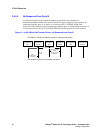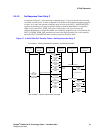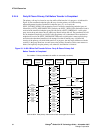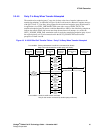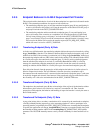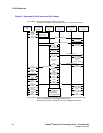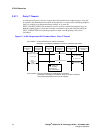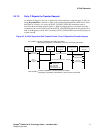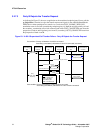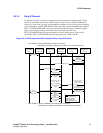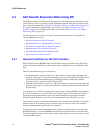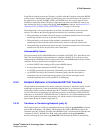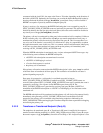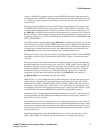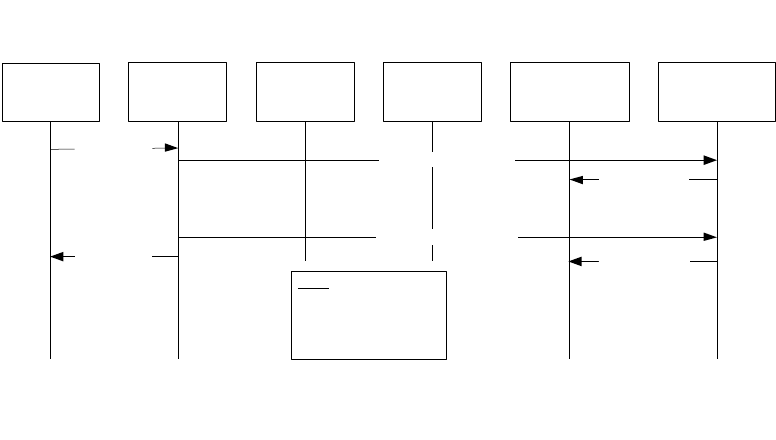
70 Dialogic
®
Global Call IP Technology Guide — November 2007
Dialogic Corporation
IP Call Scenarios
3.2.7.1 Party C Timeout
As indicated in Figure 21, the user or application at the transferred-to endpoint (party C) may fail
to respond to the ctIdentify.Invoke request causing the timer 1 to expire at the transferring endpoint
(party A) resulting in an abandoned transfer attempt. As a result, the
GCEV_INVOKE_XFER_FAIL termination event is received at transferring endpoint (party A).
Both the original primary call and the secondary, consultation call are left connected and in the
GCST_CONNECTED state from the perspective of both A and B (primary) and A and C
(secondary).
Figure 21. H.450.2 Supervised Call Transfer Failure - Party C Timeout
A
(Transferring)
IP CCLib
B
(Transferred)
App
B
(Transferred)
IP CCLib
C
(Transferred To)
App
C
(Transferred To)
IP CCLib
A
(Transferring)
App
FACILITY(ctIdentify.Invoke)
gc_InvokeXfer
(CRNp, CRNs)
GCEV_REQ_
INIT_XFER(CRNs)
FACILITY(ctAbandonInvoke)GCEV_
INVOKE_FAIL
(CRNp,
GCRV_TIMEOUT)
Pre condition:
Primary call between A and B is connected.
Secondary (consultation) callbetween A and C is connected (not shown).
KEY:
CRNp - primary call
CRNs - secondary
(consultation) call
CRNt - transferred call
Post condition:
Primary call between A and B remains connected.
Secondary (consultation) call between A and C remains connected.
Transferred call between B and C never initiated.
No response from C
T1 timer expires
GCEV_ACCEPT_
INIT_XFER_FAIL(CRNs)



